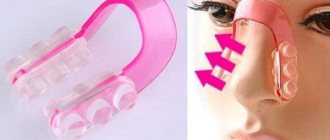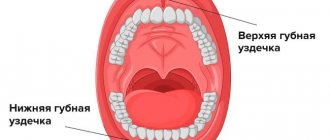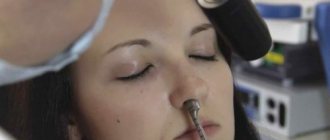Types of implants
The implant consists of a dense silicone shell and a cohesive gel or sterile saline solution. Silicone endoprostheses are more popular because they are particularly durable at an affordable price. As a result of the contraction of the calf muscles when walking, the shape of the lower leg is constantly changing, so the implants must be sufficiently elastic. Endoprostheses must be selected in such a way that they match the shape of the contracting muscles.
The shapes of implants are:
- symmetrical, resembling a crescent moon;
- asymmetrical (anatomical) with a projection shifted upward relative to the center - their upper third is the most voluminous.
The surface of endoprostheses can be either smooth or rough (textured). Endoprostheses with roughness fuse better with the surrounding tissues, which ensures more long-term and stable results of surgical correction.
There is no truth in crooked legs
Many people, despite the ideal skeletal structure, are faced with the phenomenon of false curvature of the legs. Due to the excessive thinness of the legs, the impression of crooked legs is created, and not only girls, but also representatives of the stronger half, bodybuilders and professional athletes face this problem.
You've probably met broad-shouldered, pumped-up guys with perfect six-pack abs, while showing off unattractive, thin and undeveloped legs. And this is not because they are only engaged in “pumping” the torso. Genetics is to blame here, because with “bad” calf heredity, you can pedal an exercise bike for 24 hours a day, but the muscles will not grow.
In addition, the cause of thin, crooked shins are various injuries that provoke atrophy of the calf muscles. To correct the negative consequences of such injuries, at the end of the last century they began to perform operations to correct the shape of the legs - cruroplasty. Manufacturers today offer special implants for cruroplasty, with a durable shell, filled with a highly cross-linked cohesive gel, similar in density to natural soft tissues of the body.
How is cruroplasty performed?
Cruroplasty is a technically simple operation that also takes a minimum of time. Depending on the patient’s wishes, the operation can be performed either under general anesthesia or using local anesthesia. In this case, only the lower part of the body is anesthetized, that is, only the legs and the patient can communicate with the surgeon during the operation. The surgeon makes a small incision in the popliteal fossa, through which the implant is installed in the posterior fascial sheath of the leg.
There are two options for installing an implant:
- subfascial, according to J. Glitzenstain (1979) - a simpler and more popular method in which the implant is placed under the connective tissue membrane of the calf muscle, which allows the volume and shape of the lower leg to be adjusted as effectively as possible.
- axillary – the implant is installed under the calf muscle, which reduces the likelihood of contouring. In this case, the endoprosthesis is well fixed by the surrounding tissues, which eliminates the possibility of changing its location. For axillary implant installation, two methods are used according to M. Kalixto (2003) and a safer one - according to I. Marinicheva (2010).
After installation, a well-chosen lower leg implant visually and to the touch does not differ in any way from natural soft tissue. The development, materials, production, sterilization and packaging of this type of medical products are regulated by strict rules and safety standards, which allows us to guarantee an impeccable surgical result and absolute safety for the patient’s health.
What implants are used to enlarge the legs?
The lower leg implant is a silicone one-piece endoprosthesis with certain parameters. The result of cruroplasty depends on the correct choice of implant. In terms of their properties, modern silicone endoprostheses are similar to natural muscle tissue. The choice of a specific implant model is made by a plastic surgeon, depending on what kind of defect needs to be eliminated and what result the patient wants to achieve.
Which type of endoprosthesis will be chosen depends on many factors:
- type of false curvature;
- shin shapes,
- desired result, etc.
There is simply no ideal implant that would suit all patients. When selecting them, the doctor must take into account the contraction of muscles when walking, so that the prostheses most accurately replicate their changing natural shape.
The cohesive silicone gel with which the endoprosthesis is filled has a “memory effect”, that is, it always restores its shape after deformation, and upon palpation its consistency completely imitates muscle tissue. Another undeniable advantage of modern implants for cruroplasty is their maximum safety and high stability. Even if the outer shell of the prosthesis is damaged, the filler does not spread.
Preparing for surgery
The preparatory stage includes:
- consultation with a plastic surgeon to identify indications/contraindications, choice of endoprostheses, volume of intervention and type of access;
- comprehensive clinical and laboratory examination;
- consultations with a therapist, cardiologist and anesthesiologist.
The duration of the preparatory stage is about two weeks, during which the patient is recommended to:
- stop taking medications that worsen blood clotting (hormonal drugs, vitamin E, anticoagulants);
- stop smoking and drinking alcohol: under the influence of alcohol and nicotine, the blood thins, which increases the risk of postoperative bleeding and the formation of hematomas;
- limit the consumption of salty foods to prevent swelling after correction;
- stop training 3 days before surgery;
- Do not eat or drink on the day of surgery.
How is the operation performed?
According to experts, tibia plastic surgery is a technically simple operation lasting about 1 hour. Surgery is performed under endotracheal anesthesia, epidural or spinal anesthesia. Most often, the skin for installation of the endoprosthesis is cut in the popliteal area in a natural fold, so the seam is almost invisible. The size of the incision is about 3...4 cm.
During surgery, the patient usually lies on his stomach. After treating the surgical field with an antiseptic composition and making markings, the surgeon makes an incision and prepares a “pocket” for the implant. Such a pocket should best match the size and shape of the endoprosthesis, which will become a logical continuation of the muscle.
There are two ways to install an endoprosthesis:
- subfascial - under the connective tissue membrane of the calf muscle - a more popular method, in which the volume of the lower leg is adjusted only in the required place, the implant is well fixed, cannot change its location, is completely covered by the surrounding soft tissues and is practically not palpable;
- submalar - under the calf muscle.
After installing the implant, the surgeon sutures the fascia and subcutaneous fat. A cosmetic suture is applied to the skin. The incision site is protected with a pressure bandage.
Becoming the owner of beautiful legs today is not a problem!
Actually, to correct such oversights of Nature in aesthetic surgery, a technique for enlarging the legs has been developed today. By the way, not only women resort to correction of the leg muscles; this procedure is also very popular among men. At first, implants were a means of correcting atrophied calf muscles in various diseases; a little later, athletes and jockeys began to resort to shin surgeries.
We were one of the first to begin performing surgeries to increase the volume of the legs using silicone implants. Our clinic’s specialists have been performing calf muscle implantation for several years now and have improved the technique so that all manipulations take a few minutes, and the risks after its implementation are virtually minimized.
A few words about shin surgery
Enlargement of the legs with implants or cruroplasty is a relatively new direction in plastic surgery, but already very popular.
During calf contour correction, the implant is placed into the calf muscle sheath through a neat incision in the popliteal fossa. Almost immediately after the manipulations, the shins take on a natural appearance.
Indications for shin enlargement can be roughly classified as medical and aesthetic. Thus, secondary atrophy of the lower leg muscles due to injury or disease (poliomyelitis, clubfoot, etc.) is considered to be a medical indication. The aesthetic reason for plastic surgery of the lower leg muscles can be factors such as an underdeveloped inner part of the lower leg, simply thin calves, or “false” curvature of the legs.
We will select the shape and size of the implants after identifying the structural features of your calves. The implants themselves are almost identical in properties to muscle tissue.
Our clinic’s specialists use exclusively certified silicone implants filled with highly cohesive gel with a high-strength shell.
It is worth noting that increasing the volume of the lower leg does not solve medical problems, but visually improves the shape and volume of the patient’s lower legs.
Enlargement of the lower leg: how it happens
At the beginning of the operation, we will make an incision no longer than 4 cm in the fold of the popliteal fossa. For better access to the lower leg, the patient should lie on his stomach. Next, a fascial pocket is formed next to the muscle, into which the implant is installed. It should be slightly larger than the implant, which is installed under the fascia of the medial head of the gastrocnemius muscle. Afterwards, we will suture the fascia and subcutaneous tissue, and also apply cosmetic stitches. We will perform similar manipulations with the other leg. After installation, we will check the correct contour and symmetry after augmentation of the calf muscles with implants.
The operation to enlarge the legs with implants in our clinic is performed on average about 30 minutes. We perform calf muscle implantation procedures only under general anesthesia or spinal anesthesia.
We proudly assert that the calf enlargement technique we have perfected and the professionalism of our doctors today minimize any risks during surgical intervention.
The patient should spend the first day after surgery in a hospital, under the supervision of experienced staff. In addition, after the manipulations, we recommend going through a recovery program, which lasts from 10 to 14 days.
Enlargement of the lower leg muscles with implants is usually quite easily tolerated by patients. After a few days they can already move without assistance.
Cost of the operation
To clarify the cost of the operation, call us by phone in Moscow +7 (495) 749-3322 or +7 (495) 968-8887 .
Keep an eye out for discounts and special offers!
We guarantee you the best result based on our experience. We have been professionally engaged in leg plastic surgery for more than 10 years. The majority of our patients are victims of operations unsuccessfully performed by other surgeons. We have the most experience in increasing calf volume with implants in our country .
Lower leg augmentation: the price of the operation includes the cost of implants.
Before deciding on surgery, we recommend that you read the section “Correction of false curvature of the legs, which must be taken into account before choosing a plastic surgeon.”
Shin augmentation photos before and after surgery
We are proud of our work, so we are happy to demonstrate the results of the operations performed. We present photos before and after calf muscle augmentation from the personal archive of plastic surgeons Marinicheva I.G. and Gritsyuk A.M.
Go to view the results of the operation: photos before and after shin augmentation".
Postoperative period
The total duration of the rehabilitation period after plastic surgery is 1.5-2 months, of which the patient spends the first 2-3 days in the hospital:
- 2 hours after the operation you can stand on your feet or lie on your back.
- The pain goes away in 3-5 days, but during the first three weeks some discomfort may be felt in the calf muscles when walking (the cause of the pain is tension in the popliteal fascia).
- From 4-5 days of the postoperative period you can take a shower.
- The sutures are removed 7-10 days after plastic surgery, during which time the patient is observed on an outpatient basis by a surgeon. Final healing of the wound occurs in an average of three weeks.
- Swelling in the lower leg area completely disappears in 2-4 weeks. To reduce swelling and discomfort, the patient is recommended to move only around the house in the first days after cruroplasty and, while in bed, keep his legs elevated.
- Once the protective bandages are removed, the patient can return to their normal activity regimen, which includes walking—first short walks and then longer walks. This is how the skin and muscles quickly get used to the new shape of the lower leg. However, you should return to your usual physical activity no earlier than after 1 month.
- In the first month of the postoperative period, the patient must wear compression garments (stockings, tights or knee socks) and use shoes with a heel of 4-5 cm.
- Active sports, visits to the solarium, swimming pool, bathhouse, sauna are allowed no earlier than after 1-3 months (it is best to consult a plastic surgeon about this).
Cruroplasty (leg plastic surgery)
Leg plastic surgery (cruroplasty) is an operation to correct the shape and size of the legs using special implants. Using this procedure, you can adjust the size of the lower leg, gluteal area, hips, lengthen the limbs, and also correct the existing unevenness of the limbs and their asymmetry. Cruroplasty makes it possible to eliminate both true and false curvature of the legs. If true, there is a real deformation of the tibia, the internal contour of the perineum is disrupted. With false curvature, a visual effect is created, but there is no deformation of the bones.
Who needs leg plastic surgery?
Leg plastic surgery is performed for people with true and false curvature of the legs. Cruroplasty will also be a necessary surgical procedure for those who have:
- congenital curvature in the lower leg area;
- muscle wasting in the calf area;
- excessive thinness of the lower leg;
- muscle atrophy due to injuries or illnesses;
- thinness in the buttocks area;
- different leg lengths, which could be caused by various reasons.
There are a number of standard contraindications to leg plastic surgery. Among them are heart and respiratory diseases, diabetes mellitus, blood clotting disorders, diseases of internal organs, oncology, enlarged veins, vascular diseases, and inflammation of the extremities.
Preparation and performance of the operation
Preparation for cruroplasty begins with the manufacture of custom-sized implants. In consultation with the surgeon, the future location of the implants is determined and the course of the operation is planned. A couple of days before surgery, the patient must follow a rest regime and a diet that excludes heavy foods. Leg plastic surgery is performed under general anesthesia. It is divided into several types depending on the areas of work:
- enlargement of the lower leg (cruroplasty);
- enlargement of the thigh area (femoroplasty);
- work in the gluteal region (gluteoplasty);
- leg lengthening.
Most often, the surgeon makes an incision in the popliteal region, and places the implants so that they are fixed by the calf muscle. This is the most important stage in leg plastic surgery. The entire surgical procedure takes about one hour.
Result and rehabilitation
Rehabilitation lasts on average up to two weeks, three days of which need to be spent in the hospital. You should wear compression garments and avoid physical activity for a month. Since walking can be painful, women should avoid wearing high-heeled shoes. The sutures are removed on the 14th day. As a result of the operation, the patient receives a beautiful and visually correct shape of the legs. If there were problems with the size of the legs, then during plastic surgery they are eliminated and the limbs are aligned relative to each other. The results will be clearly visible three months after the operation.
Possible complications
In the vast majority of cases, no serious complications are observed with cruroplasty; at the end of the rehabilitation period, the operated legs cannot be distinguished from natural ones in appearance, the endoprostheses cannot be palpated, and the scars in the natural fold under the knee are almost invisible.
However, like any surgical intervention, cruroplasty can be accompanied by complications - general (characteristic of all operations) and specific. Specific complications after plastic surgery include:
- Formation of a hematoma in the popliteal fossa;
- Seroma is an accumulation of serous fluid in the muscles around the endoprosthesis, caused by the reaction of adjacent tissues;
- Suppuration of a postoperative wound;
- Capsular contracture is the formation of a dense connective tissue membrane around the endoprosthesis, compressing the implant and deforming the contour of the lower leg;
- Dystopia of the endoprosthesis - displacement of the implant away from the installation site due to violation of the bandaging regime or improper formation of the “bed”;
- Asymmetry in the size and shape of the legs with significant tissue swelling or incorrect choice of implant;
- Contouring of the endoprosthesis - “bulging out” the contours of the implant, the dimensions of which turned out to be too large;
- Formation of rough keloid-type scars;
- Complete or partial loss of skin sensitivity on the inner or outer surface of the leg due to damage to the large or small cutaneous nerves during rough operation.
The fears of some patients about the negative impact of plastic surgery on the condition of the veins are not justified.
Risks associated with shin enlargement
Each patient will experience varying degrees of swelling and bruising, which is determined by a number of factors, including age and health status. There are risks that can develop after any surgery and do not depend on the qualifications of the plastic surgeon.
Fluid accumulation in the calves, called seroma, can occur after calf enlargement. Seroma can go away on its own and usually goes away within a few weeks. The accumulation of blood in the skin after surgery is called a hematoma and usually must be removed surgically. Hematomas can increase the risk of infection and may increase scarring.
Scars occur after any surgery and the final appearance of the scar cannot be predicted. Scars can range from a nearly invisible line to large hypertrophic and keloid scars, depending on the body's response to treatment. Unwanted scars can be corrected surgically.
Asymmetry of the size and shape of the lower leg. It is impossible to create perfect symmetry and slight differences are to be expected. This should be discussed with a medical practitioner.
Stop taking any medications and vitamins that affect blood clotting to reduce the risk of hematoma formation. Smokers may face an increased risk of complications, which should be understood. In this regard, the use of any medications should be discussed with a plastic surgeon.
Side effects of surgery should be carefully discussed between the patient and the doctor.
Below you can read the list of questions and answers on the topic of shin surgery. I, plastic surgeon A. V. Grudko, answer all questions personally. You can also ask me your question through the feedback form.
Reviews
Yana, 30 years old
“I can’t help but share my experience. In general, 4 years ago I long-awaitedly corrected the shape of my legs. Why is it long-awaited? Well, I’ve been tormented all my adult life, I heard a couple of times from doctors that I had false curvature of my legs, but I didn’t dare to have an operation, I didn’t have money, or I had time - work, children. But at the age of 43 it got stuck. And what a fool I was for not doing this earlier, before that I didn’t even have skirts in my wardrobe. The operation is a real chance to get rid of a bunch of problems, including defeating your inner “cockroaches”. It took no more than a month to recover. at least within a month I was back on my heels))) objectively, I could have done it earlier, but I decided to play it safe. I definitely don't regret it. Not a bit."
16-08-2012
Alina, 27 years old
“Why I decided to do it is probably clear from the essence of the operation, my legs are thin and crooked. I’ve been wearing pants all my life, and then only in wide ones, and it doesn’t matter that it’s 35 degrees outside. Only abroad, running to the sea with open legs. The operation corrected not only the problem of my legs, but my whole self, I adore myself, my legs and summer! I won’t say that rehabilitation is very painful, but for the first couple of days on painkillers, it’s better to rest and walk less. After a week you can more or less walk long distances, after 2 weeks the pain practically goes away, after a month you remember about the operation only because you still need to take care of your legs, and after two weeks you forget that there was some kind of intervention. Almost 2 years have passed since the plastic surgery, I can’t feel the implant at all, it’s almost impossible to find it with my hands, it’s almost impossible to feel it, I can’t feel it, I know where it is, but I can’t find its outline with my fingers, the doc can, but they somehow feel to another. Apparently technology. The feeling in heels is normal, nothing new. At first it is easier to walk on a small wedge. The thought of regret never occurred to me, because after the operation the quality of my life changed, I adore my doctor, who gave me such happiness, I walk around in skirts with my head held high. I will be grateful to him all my life for my beautiful, slender legs!”
04-09-2014
Vika, 36 years old
“I had surgery! After 3 hours I already crawled to the mirror to look at the result, barely of course, half bent. I feel now as if I never did. I don’t feel the implants at all, sensitivity has returned. I move around as usual. I feel just great!!!”
20-05-2015
More
Question answer
What is preferable to choose: gel correction or implant installation?
It is possible to visually increase muscle mass by correcting thin shins using cruroplasty. Improper administration of the gel can serve as a site for the development of infections and inflammation if the patient’s body rejects the material. Rejection can occur both in the first 30 days and 12 months after plastic surgery. This cannot happen with implants. In addition, after a certain period of time, the gel correction becomes deformed and loses its shape, which cannot happen with cruroplasty.
Are there any contraindications to cruroplasty for varicose veins?
Not performed for varicose veins. First of all, it is necessary to get rid of varicose veins, then perform plastic surgery. It is impossible to combine two operations - removal of the affected veins and correction of the calf areas. Cruroplasty can be performed no earlier than 5-6 months after curing varicose veins.
Will it be possible to wear heels after surgery? After what time?
You can and even need to wear shoes with heels. During the postoperative recovery period, you need to walk in low heels for several minutes every day, increasing the time daily. The procedure will reduce pressure on the muscle tissue of the lower leg and reduce rehabilitation after surgery. After a month, you can wear high-heeled shoes on a regular basis. There is no need to worry about the durability of the implant - it does not move or turn over when walking in heels.
Will plastic surgery correct leg asymmetry? One shin is thicker than the other.
Yes, in most cases, shin plasty can eliminate asymmetry of the lower extremities. To do this, it is necessary to correct the shin of a smaller volume by sewing in a calf implant. But this is not always possible, since sometimes not only the soft tissue of the legs varies, but also the structure of the bone. In this case, larger liposuction of the lower leg is recommended.
How soon can you start driving?
Restrictions on driving a car are lifted individually as the pressure in the lower leg muscles decreases and cramps are eliminated. As a rule, the patient is allowed to drive after two weeks.
Options for shin correction
Currently, mainly two techniques are used to increase the volume and correct asymmetry of the legs. The first
is the installation of special calf implants, and
the second
is correction using a gel such as Macroline (a modern biodegradable filler) or the patient’s own fat (lipofilling procedure). Let's look at each method in more detail.
Cruroplasty surgery: tibia augmentation with implants
The operation to install calf implants is called cruroplasty.
Like any operation, cruroplasty has its pros and cons compared to other techniques. For example, unlike calf correction using fillers, the results of which last only for a few months, installation of a calf implant is a result that lasts a lifetime. At the same time, if the result of the operation does not satisfy the patient or some complications arise, then the problem is solved simply: the implant is removed.
It is important to note that some surgeons recommend installing calf implants in several stages: starting with a slightly smaller implant. The recommendation is due to “insurance” against unpleasant consequences that may be irreversible. The fact is that the shin implant is installed under the fascia of the calf muscle, from where it does not migrate anywhere. But because the muscle membrane is very thin, placing an implant that is too large can damage it. In this case, it will no longer be possible to reinstall the implant.
That is why, if the asymmetry of the legs is large or it is necessary to install a prosthesis of significant size, it is recommended to carry out the operation in two stages with an interval of approximately 3-4 months.
In general, cruroplasty is a simple operation that usually takes no more than 30 minutes. After the surgeon makes small incisions, a bed for the implant is formed. This is the most delicate part of the operation. Sometimes, before selecting and installing the desired implant, the surgeon places a special device in the bed - a sizer. With its help, it is possible to more accurately determine the volume of the required implant and, as a result, achieve the best results of the operation.
Photo from the operating room. Surgery to install shin implants (photo):
Postoperative period after cruroplasty
In the postoperative period after cruroplasty of the legs, patients are usually recommended to wear compression garments and shoes with low, stable heels (about 4 cm) for 7-10 days, thus relieving tension in this area. The entire rehabilitation and recovery period after cruroplasty lasts about a month and a half. During this time, the body manages to create a capsule around the implant and, since the level of tension in this zone is high, to form an additional microshell around the implant itself. After this healing process is completed, the patient ceases to feel the implant and the body itself perceives it as part of itself.
Installation of implants under the muscle fascia ensures that the implant is not felt by the patient and is not noticeable (does not contour) visually. Calf implants are filled with cohesive gel and come with a lifetime warranty, so there is no need to replace them.
Plastic surgeons and clinics specializing in Cruroplasty surgery:
Mamedov Rusif Plastic surgeon
Specialization
- Mammoplasty
- Rhinoplasty
- Facial plastic surgery
Sergey Demin Plastic surgeon
Specialization
- Mammoplasty
- Abdominoplasty
- Lipofilling
- Liposuction
Farhat Fuad Plastic surgeon
Specialization
- Mammoplasty
- Abdominoplasty
- Cruroplasty
- Liposuction
Comments and questions
Karina 12/03/2017 at 03:42 pm # Reply
Thank you very much for such detailed information about this type of operation









